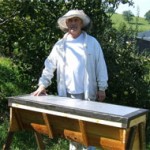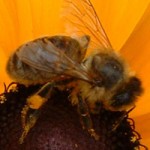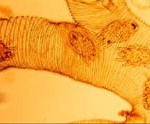In a previous article I've written concerning varroa mites I mentioned the three general methods of treatment. The chemical method was first which, personally, I try to avoid since chemicals have so many disadvantages. I also wrote of a few things you can do mechanically like installing screen bottom boards, replacing old comb, and removing drone comb. Here are a couple of alternative treatment … [Read more...]
Controlling Wax Moths
Wax moths are a common problem for beekeepers. They are small, tan in color, and eat the comb in a beehive. They lay eggs in the wax which hatch and the larvae burrow through the frame of comb as they eat whatever is in their path. These small, white larvae leave behind a web-like mess filled with feces and debris. They will kill a weak colony and ruin any stored equipment. Some may say that it … [Read more...]
The Varroa Mite
Originally discovered and named Varroa jacobsoni in Indonesia in 1904, varroa established a strong foothold in many eastern countries and eventually moved to America. The mite was detected there in 1987. During that time, scientists learned that the jacobsoni species of varroa was not the one causing all the damage to our European honeybees. They found that V. destructor is the name of the mite … [Read more...]
Insecticides – a Disaster in the Making
Insecticides are a hot issue in beekeeping right now and the British Beekeepers Association is refusing to sever its ties with pesticide manufacturers despite pressure from many of its members, and it seems that some recent CCD research has been compromised by the influence of the same corporations, determined to protect their profits no matter what the cost to nature. The subject of Phil … [Read more...]
Studying Honey Bee Health and CCD
It's that time of year again, when beekeepers across the country are gearing up for winter. Every measure will be taken to ensure each hive has enough surplus food to keep their colony buzzing until next spring. For some that means leaving a super or two of fall honey, Cooking up fondant, feeding pollen or grease patties, giving any needed treatments, and so on. Just the same fall routine we … [Read more...]
Tracheal Mites
Tracheal mites (Acarapis woodi) were first found in the United States in 1984 in the state of Texas, and have continued to spread and are still a problem to this day. THE SPREAD OF TRACHEAL MITES The mites live in the tracheal tubes (breathing airways) of honey bees, a heavy infestation results in bees that don't live nearly as long and their production is cut short. The mites are … [Read more...]









Recent Comments